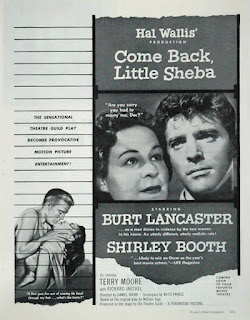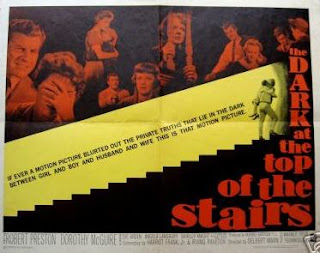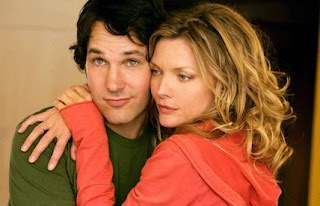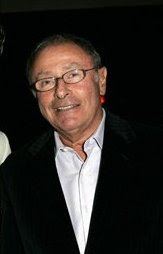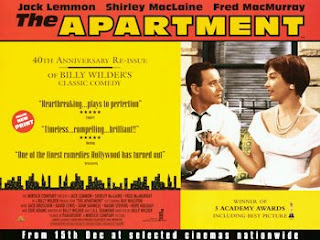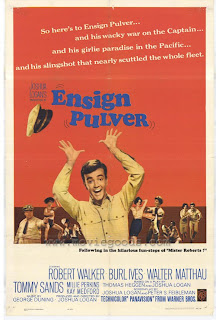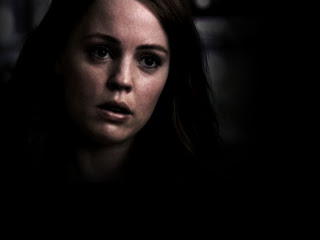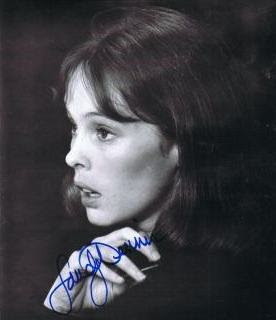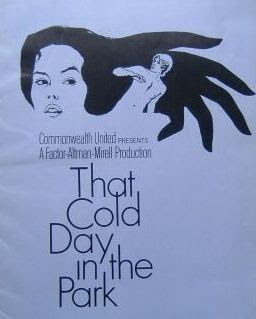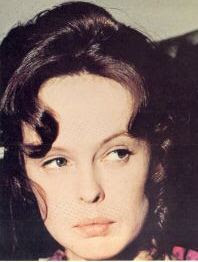
Having just seen Michael Haneke's brilliant, brutal and altogether disturbing American remake of his 1997 German film, "Funny Games," I've come to the conclusion that the Academy of Motion Picture Arts and Sciences should enlist Haneke's villain, Michael Pitt, as its Oscar host next year - with Pitt preferrably in character.
Something has to be done to give filmdom's embarassing White Elephant a shot in the arm - although I'm not certain that even Pitt scaring the bejesus out of the viewers will necessarily do the trick.
The situation appears to be hopeless: The show, which has been dissected and critiqued ad infinitum for the past two decades at least, has simply become too self-conscious. It seems to keep checking itself in the mirror so no hair is out of place and blowing into its palm to make sure it's breath is OK. (Bonus: Check out Newsweek's "The Oscars Must Die" by
Mark Peyser for more dish on the divine badness of the Oscars.)
This year's show, which managed to eke out a few good notices in some quarters, was so proper and so careful that it was absolutely dull, with its potentially promising host, Jon Stewart, so reigned in that he was incapable of doing anything edgy or envelop-pushing. He was almost apologetic when he did say something vaguely out-of-line. Such a polite young man!, as my granny might have said.
The overall lifelessness of the show made me long for the good, old vulgar days when Rob Lowe teamed up with Snow White for some deranged, tone-deaf harmonizing (thank you, Allan Carr, wherever you are) or the four or five hours when the exiled Chris Rock dared to deflate industry egos with a nasty, bracingly profane sense of humor. The funniest bit on any recent Oscar show was Sean Penn self-righteously rushing to poor Jude Law's defense and chiding Rock for verbally bludgeoning his bud.
The only remotely memorably moment on this year's show was best-actor winner Daniel Day-Lewis planting a kiss of George Clooney's mouth prior to accepting his award.
There's a reason why the Oscar comes in the form of a naked man, right?
The ratings for this year's show were reportedly the lowest ever - no surprise, given the films and people nominated. The ratings always plummet when America's moviegoing public is uninterested in the nominees. On the other hand, they soared when the film in question was James Cameron's "Titanic" (1997) or Peter Jackson's "The Lord of the Rings: The Return of the King" (2003).
No one wants to see Tilda Swinton win an awards, expect for me and possibly a few hundred movie freaks. And contrary to what the clueless pundits had to say, Swinton's acceptance speech was brilliant, the best of the evening - a wittily caustic gem of brittle cynicism and hero-bashing (the hero being George Clooney, who Swinton actually likes). But no one got it, especially not the people who should know better. Has American been dumbed-down that much?

Finally, what’s with the Academy's annual “In Memorium” errata? Either the board of directors is being very selective (and, by extention, snobbish) about who is honored or it's simply slipshod and lax in its research and fact-checking. How else can one explain the omissions year after year?
How difficult is it for someone to keep a list of those film personalities who died during the calendar movie year being honored? Well, apparently, it’s a tough job because how else do you explain the fact that, every year, familiar faces are overlooked?

This year, the Academy omitted both Lois Nettleton and Brad Renfro from the group. Granted, both died in 2008, not 2007, but Heath Ledger and Suzanne Pleshette passed during the same week as Nettleton and Renfro and they were both included. (The Academy doesn't seem to pay attention to the strict calendar year when honoring the dead. Either that or it changes the rules from year to year.)
When US Weekly asked about the omission of Renfro, an Academy rep reportedly said, "It was an editing decision ... We can't fit everyone in."
Say what? It would have taken - what? - five or six extra seconds to include Renfro and Nettleton.
It's simple bad form and it happens every year. Last year, Dennis Weaver and Adrienne Shelly, who both died in 2006, inexplicably didn’t make the Academy's 2007 obit reel, while James Doohan, who died in 2005, was honored in both 2006 and 2007. Go figure.
What's odd about the omission of Shelly is that the last film she directed, "Waitress," was generating a lot of buzz at Sundance just as Oscar fever was raging in late 2006-early 2007.
Going back, the criminally underrated Sheree North didn't make the list the previous year, 2006.
Again, just how difficult is it to compile a list of people who died during the calendar year? It's something an intern could do for the Academy.
Anyway, it's difficult to take the Academy's self-congratulatory airs or to appreciate its bizarre, arbitrary rules regarding foreign-language films when it is so sloppy in other areas. And this sloppiness is just another example of the Academy’s overall lack of respect for “its own.”

Yes, it's time to face up to the facts that the Oscarcast is old and tired and has become obsolete, having been usurped by its own sidebar - the ghastly Red Carpet Ordeal that precedes it. Fashion has become the main focus; the awards are now beside the point, almost unnecessary.
I wouldn't at all be surprised to learn that the ratings for E!'s pre-show Red Carpet Ordeal were not only better than the ones for the show that followed, but that they actually skyrocketed.
Although I didn't think it possible, the Red Carpet Ordeal hit an all-time low this year when the Red Carpet Whores (the overly painted women and snarky gay guys who provide non-stop fashion commentary) repeatedly dissed poor little Ellen Page, the star of "Juno," for, well, not looking vulgar or like some Vegas showgirl. She looked youthfully sophisticated and, here's the catch, normal. Like a genuinely young woman, you know. Once again, no one got it.
Bottom line: The Oscars are hopeless. It's time to write them off. End of diatribe.
Note in Passing: There's been a tempest in a teapot about Whoopi Goldberg being omitted from the collection of hosts over the years in a montage celebrating the Oscar's 80th year. (Former hosts Jack Lemmon and Steve Martin were also overlooked, but never mind.) The show's producer Gil Cates apologized, saying it was an oversight. (Was Brad Renfro's omission from the "In memorium" clips also an "oversight"? Or was it another "editing decision"? Sloppy!) Anyway, Whoopi really wasn't completely omitted from the montage. A clip of her victory was included among those who won an Oscar over the years. My hunch? It was no "oversight" at all. The Academy figured she was represented with one clip and didn't need another. That makes sense, right?
Thanks to jbryant for reminding me of Charles Lane, who died in July at the age of 102 and was also omitted from the In Memorium reel this year; and to Godard for reminding me of the passing of Richard Jeni and Tom Poston last year.
(Artwork: The Golden Boy himself and Brad Renfro, a tarnished actor ignored by a splipshod Academy. Ditto for Lois Nettleton and, last year, Adrienne Shelly)
* * *
Anyone interested in perusing some 2060 of my film reviews, dating back to 1994, can do so by simply going to RottenTomatoes.Com













